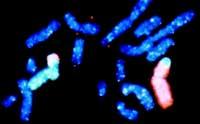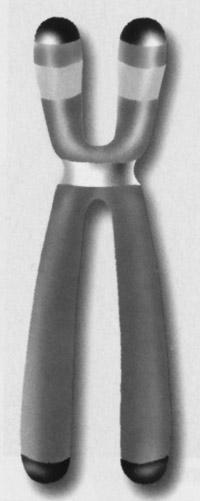Cell clock
2001/10/08 Agirre Ruiz de Arkaute, Aitziber - Elhuyar Zientzia
Cells use telomeres to quantify their number of divisions. They are tails of the chromosome because they do not code anything, they are just repetitive sequences. In each cell division, about 50-200 nucleotides are lost that will not recover. Therefore, after several divisions, telomeres are very short and the cell understands that it is ‘aged’.
Every time the genetic information is copied from the cell there is a high risk of mutations, which can cause a malfunction of the cells. The cell has found the way to avoid it, because when the telomere is too short, the obsolete cell starts a suicide mechanism.

However, not all telomeres have the same length. So far, experts considered that the cell took into account the average length of all telomeres, but the results of recent studies indicate that cell life is limited by the shortest telomere between cell chromosomes.
However, there are continuously dividing cells, such as germ cells. These contain telomerase, an enzyme that stretches telomeres. The same goes for cancer cells. The stretching of telomeres by telomeres is a constant, which causes a continuous division of the cells, with the consequent tumor growth.
Since telomere length is involved in cell death, knowing its specific functioning would contribute to the development of new cancer treatments. According to this latest study, it is sufficient for telomeres to provide the shortest telomere so that new cell divisions can occur, and inhibition of telomerase may be the way to limit cancer growth.
Additional information: John Hopkins Medical Institutions

Gai honi buruzko eduki gehiago
Elhuyarrek garatutako teknologia





